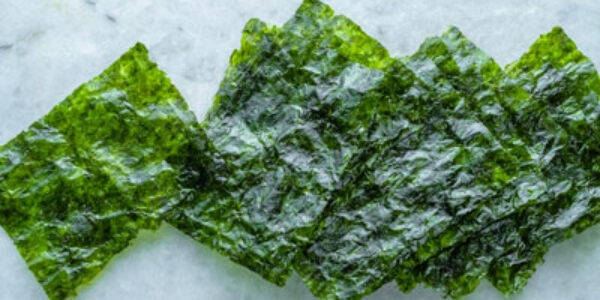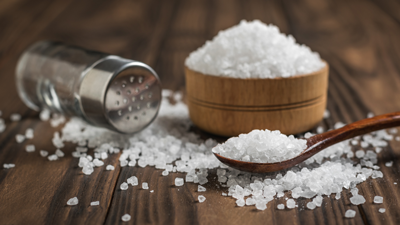
We need iodine to make thyroid hormone, which we use to regulate energy in our body. Our babies also need thyroid hormone for the proper development of their brain and nervous system before and after birth.
According to the World Health Organization, iodine deficiency is a lead cause of brain damage in children, affecting both their cognitive and motor development. This is particularly important during pregnancy and their first 2 to 3 years, so it is extremely important to get proper intake during pregnancy and lactation, and to include sources of this mineral in our children’s diet.
The only good and reliable whole-food, plant-based source is seaweed, but levels vary tremendously. Kelp, for example, has about 3855 mcg in just half a tablespoon! Meanwhile, one sheet of nori (like the ones used to make sushi) only offers between 35 and 55 mcg.
When it comes to iodine, excess is just as bad for us as deficiency. If we get too little, we could develop hypothyroidism. This is when our thyroid doesn’t make enough thyroid hormone, resulting in a slower metabolism, trouble regulating our body temperature, and fatigue. But ingesting too much can lead to hyperthyroidism, the production of excessive thyroid hormone that increases our metabolism, gives us a fast and irregular heartbeat, and causes irritability, among other symptoms.
Try our personalized calculator below to determine how much iodine you need and what your maximum intake should be. Also, learn about different sources and discover some important facts.
Top Whole-Food, Plant-Based Sources
Hover over each type of seaweed below to see how much iodine you can get with one serving. Click on the pictures to visit our seaweed interactive page with a personalized calculator of all the nutrition you can get from one serving, more information about how it supports our body, tips to choose and prepare it, interesting facts, and more!
Iodine Personalized Calculator
See how much iodine you and your family members need, according to the Dietary Guidelines for Americans, 2020-2025.
Terminology:
- Daily Value (DV): The recommended amount of nutrients to consume each day for individuals who are 4 years old or older.
- Recommended Daily Allowance (RDA): The recommended amount of nutrients to consume each day according to the individual’s age, gender, and whether a woman is pregnant or breastfeeding.
- Upper Intake Level (UL): The highest amount of nutrient intake that will not pose adverse health effects on most individuals.
Important Things to Know
Comparison of Iodine Sources
You may be wondering about other potential sources of iodine, such as supplements, dairy or seafood. Below we make a quick and simple comparison between your different choices.
References









